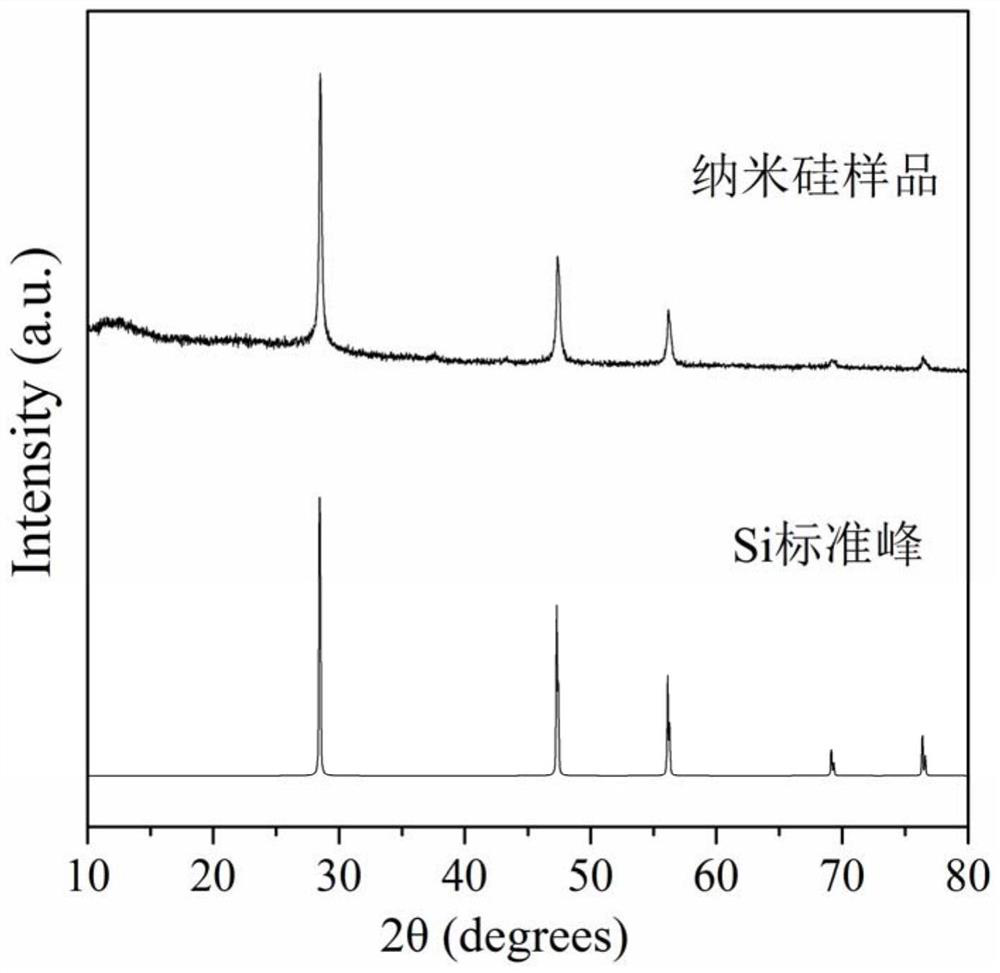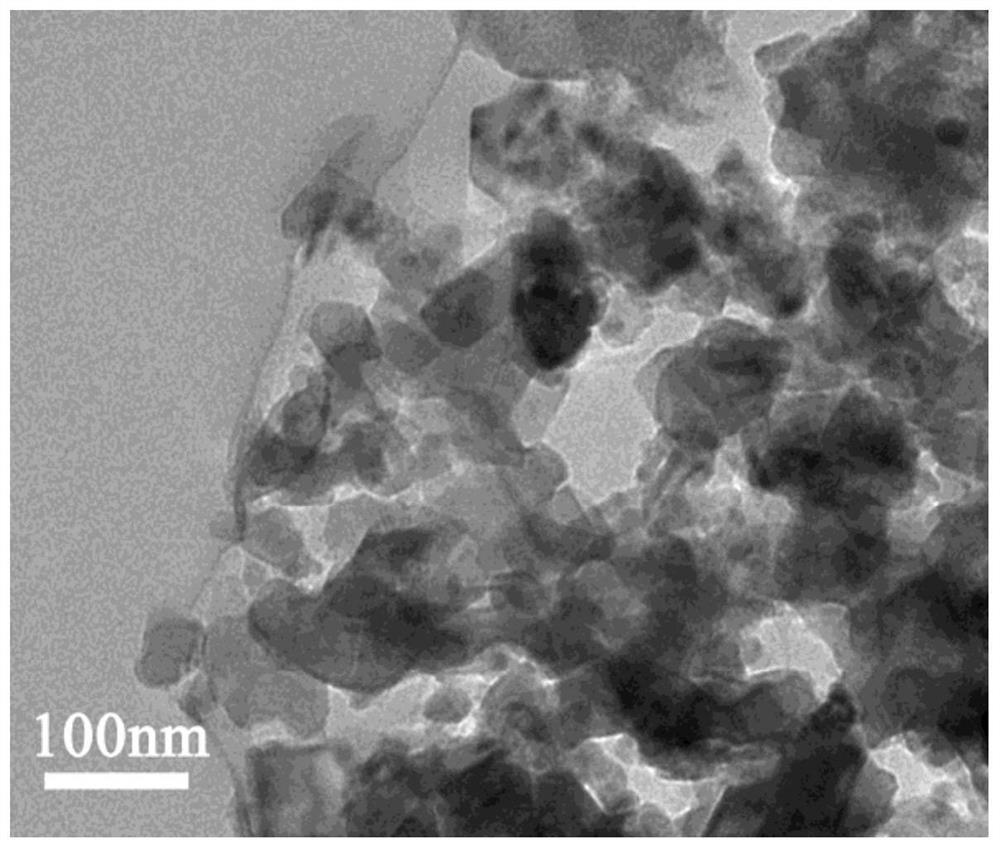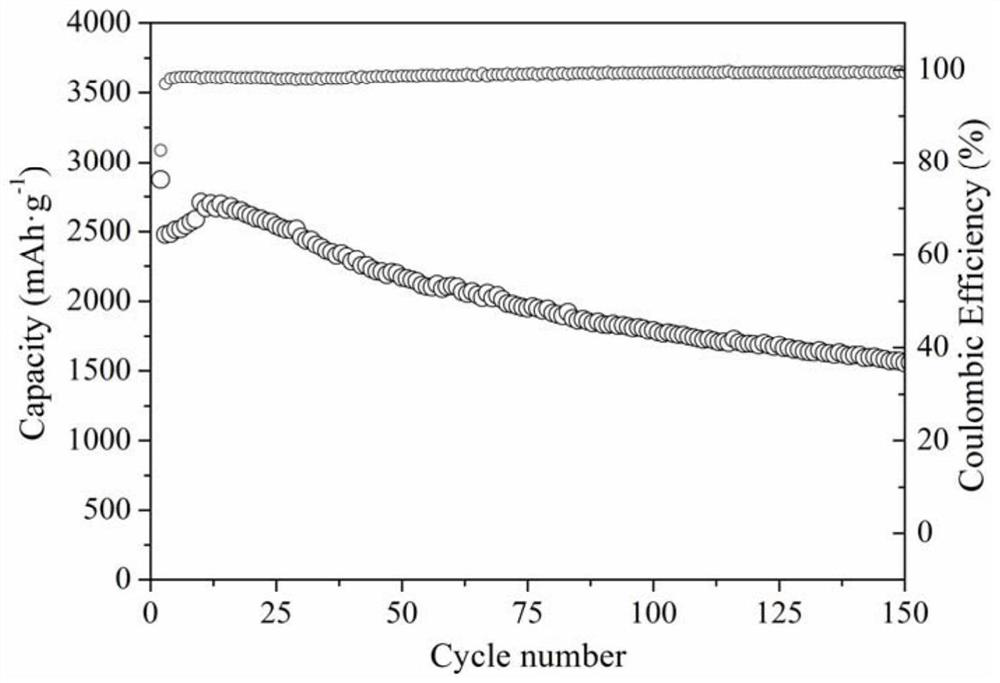Oxidation grinding preparation method and application of carbon group element elementary substance material
A family element and simple substance technology, which is applied in the field of oxidative grinding preparation of carbon group element simple substance materials, can solve problems that affect the efficiency and quality of mass-produced products, low capacity of battery negative electrode materials, poor charge-discharge cycle performance, etc., and achieve excellent electrochemical performance. high performance, reduced ball mill energy consumption, and mild reaction
- Summary
- Abstract
- Description
- Claims
- Application Information
AI Technical Summary
Problems solved by technology
Method used
Image
Examples
Embodiment 1
[0048] A method for preparing a silicon elemental material by oxidation and grinding, comprising the following steps:
[0049] (1) Synthesis of precursors:
[0050] In the argon atmosphere glove box, according to the stoichiometric ratio of 2:1:1, the simple substances of metal lithium, zinc, and silicon were mixed to obtain a mixture; the mixture was sealed in a metal tantalum container, and the metal tantalum container was placed in a vacuum environment to Raise the temperature to 600°C at a heating rate of 200°C / h for 3 hours, then cool to room temperature with the furnace; open the metal tantalum container in an argon atmosphere glove box, and grind the powder obtained by the solid phase reaction until it has no metallic luster; grind the powder again Seal it into a metal tantalum container, place the metal tantalum in a vacuum environment, raise the temperature to 770 °C at a heating rate of 200 °C / h and keep it for 4 hours, and cool to room temperature with the furnace; ...
Embodiment 2
[0058] Performance test of nano-silicon
[0059] The nano-silicon prepared in Example 1 was used as an electrode material for a lithium battery for performance testing. Fully mix nano-silicon, acetylene black and binder (sodium alginate) in a mass ratio of 6:2:2, add a solvent to adjust the viscosity of the slurry; apply the slurry on the copper current collector with a scraper; Vacuum dry at 100°C in a drying oven for 10 hours; cut it into circular battery negative electrodes with a diameter of 12mm; assemble a button half-cell in a glove box with a lithium sheet as the counter electrode, and the electrolyte is 1.0mol LiPF6 / EC:DMC: DEC=1:1:1 Vol% with 10% FEC, 2% VC. Let the sealed battery stand for 24 hours, and use the Land (Blue Electric) battery performance test system to test the cycle performance of the battery. The test results are as follows: image 3 shown. Depend on image 3 It can be seen that the first discharge specific capacity of nano-silicon is 2870mAh·g ...
Embodiment 3
[0061] As described in Example 1, the difference is: after completing step (3), the sample is vacuumed at 10 -3 Pa, the temperature is 600 ℃ under the conditions of heating for 3 hours, can collect metal zinc.
PUM
| Property | Measurement | Unit |
|---|---|---|
| particle size | aaaaa | aaaaa |
| size | aaaaa | aaaaa |
| current efficiency | aaaaa | aaaaa |
Abstract
Description
Claims
Application Information
 Login to View More
Login to View More - R&D
- Intellectual Property
- Life Sciences
- Materials
- Tech Scout
- Unparalleled Data Quality
- Higher Quality Content
- 60% Fewer Hallucinations
Browse by: Latest US Patents, China's latest patents, Technical Efficacy Thesaurus, Application Domain, Technology Topic, Popular Technical Reports.
© 2025 PatSnap. All rights reserved.Legal|Privacy policy|Modern Slavery Act Transparency Statement|Sitemap|About US| Contact US: help@patsnap.com



